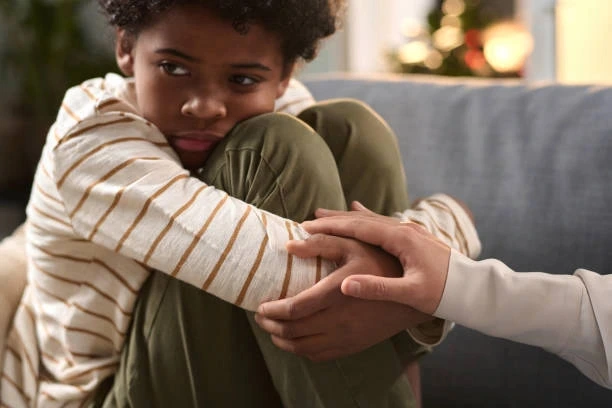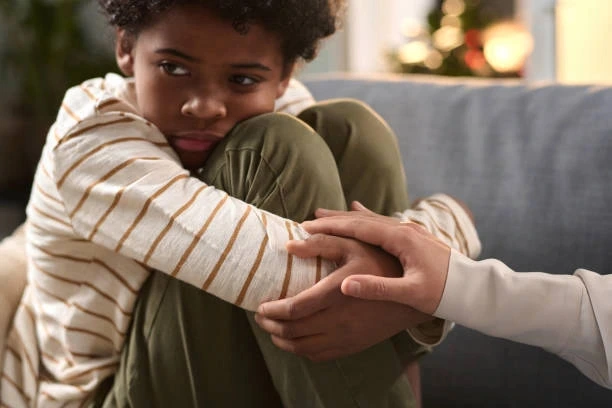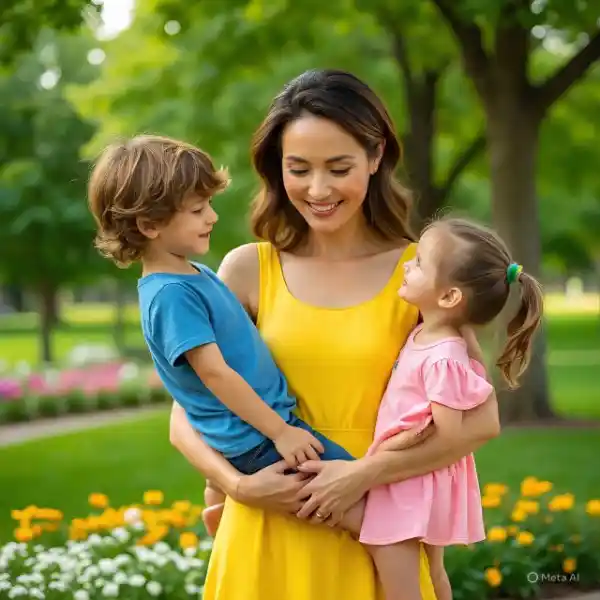Adoption and Trauma: 7 Things To Note Before Adoption

Adoption and trauma go hand in hand in the adoption journey. As much as adoption is a life-changing experience for the adoptive parents—a birth mother who wishes to pursue her career or a child who craves a chance to be loved—it also carries its own emotional complexities too.
Trauma in adoption usually comes from the child’s early experiences that are related to the separation from the biological parents or disruption in the care. These early challenges can affect the child’s emotional responses and their trusting abilities in the future.
It is therefore important to understand the core affects of trauma in adoption because it helps the adoptive parents and caregivers understand how to respond properly to the child’s needs.
Recognizing adoption and trauma affects on the child will empower the adoptive families the opportunity to develop a good supportive environment that will enable the baby to heal on time. Addressing these transitional dynamics carefully can make good differences and help the adoptee feel secure in their new family structure.
Now that you understand the relationship between adoption and trauma and how trauma can affect adoption experiences, let’s look at various ways it can impact children and the actionable ways to make a difference.
Let’s dive in.
Understanding the Connection Between Adoption and Trauma:
Trauma is a common occurrence in every adoption because of the distribution that happens early in the adoptee. It often starts with the separation of baby from their biological family. For many adopted children, the early separation from their birth family is always a big loss to them, and it goes to the extent of impacting their sense of belonging and security.
The truth is that, whether they were adopted immediately after their birth or not, they are very sensitive when separated from familiar scents, voices, or environments, and it creates early stress in their lives.
Research also shows that even the children from foster care homes or orphanages also faced different challenges like neglect, abuse, or inconsistent care given, which can heighten their risk of trauma responses. This makes it hard for them to trust any relationship again. Many adopted children experience great low self-worth and anxiety, which can persist throughout their life.
Physiologically, the effects of adoption-related trauma can also include attachment challenges, which also increase their sensitivity to rejection. Adopted children might also have serious identity questions or experience some times of intense insecurity or loneliness issues, wondering they are lovable, and so many are affected too.
Recognizing the link between adoption and trauma is what will help the adoptive families offer the best support to the adoptee, to foster healing and reliance over time.
Signs Of Trauma In Adoption:

Let us look at the signs that will show you that the adoptee is going through trauma after adoption.
Most of these signs can be seen as emotional or behavioral in the children; they include difficulty trusting people, emotional challenges, or intense mood swings. Most younger adoptees might resolve to crying excessively or aggression.
On the other hand, the adolescents may struggle with self-esteem, become withdrawn, or have other bigger issues as they suffer the impact of their identity and past experiences. Trauma responses can differ as the child grows. In their early days, you will notice the trauma as attachment issues, like separation anxiety. School-age adoptees may have concentration issues, which makes it difficult for them to learn effectively.
In their adolescents, trauma may resurface or become intense as they seek their independence and identities. At this very stage, they may start feeling abandoned or rejected, especially when they find out they were adopted. As you are learning these signs, you are ready to help the adoptee process their experiences effectively.
How to Parent an Adopted Child With Trauma:
To parent an adoptee with trauma, you have to be patient and understanding. Trauma can manifest in so many ways, including fear of abandonment and difficulty forming attachments. That is why it is important to understand the signs and know how to respond to them. Building trust, validating emotions, and having patience are the best strategies to handle that situation.
Take some time to build trust with your new baby, and ensure to be present in there life no matter how busy you are. That will help them feel secure and safe. Never shun them whenever they express their fear or anger; show them that they have the right to share their emotions. This helps them feel heard and understood, and they’ll trust you more for that.
Now, don’t think it will be a quick fix; you must be patient, as the healing process takes a little time. Traumatic experiences don’t go easily, so be celebrating your milestones and little wins as they gradually repair. Seeking advice from professionals regarding this can also be invaluable. Adoption and trauma-trained therapists can offer great insights and strategies that will help the child get better.
Ultimately, the best support you can give to any adoptee with trauma is to provide them with a nurturing environment where they’ll feel safe and empowered to heal at their own pace. When all these are in place, you are sure your baby’s will be cured and your bond with them will deepen as well.
Approaches To Help The Adoptee Heal From Adoption Trauma:
When it comes to taking care of adopted children with trauma, there are specialized therapeutic healing methods that are meant to benefit each of their unique emotional needs. One of them is attachment-based therapy, which concentrates on helping the child relate well with their caregivers and build secure attachments.
This formula helps to fix the underlying issues related to adoption and trauma as well as provide a good ground for building bond that will help the child’s long-term stability of emotions.
Play therapy is also good, particularly for the younger adoptee. The play therapy gives the adoptee opportunity to express their emotions, even as they still struggle to articulate in words, and the therapist can observe and address the issues better.
The therapy also helps establish parent-child connections, build trust and create an enabling space for the adoptee
Mindfulness practices can be a supportive adjunct to therapy, as they teach children to manage overwhelming emotions and develop self-regulation skills.
Engage in Simple mindfulness exercises like grounding techniques, etc to help the children during their times of distress related to past trauma. This helps them to have inner peace about themselves.
Also, good communication between you and the child is important. It makes the child feel safe to share their feelings with you, which can reduce their feelings of isolation and confusion. Effective and honest communication help the adoptee understand there adoption story and gradually ease their trauma-induced anxieties and pains.
Lastly, positive reinforcement is another powerful strategy to help the child heal fast. This is all about praising their positive behavior and celebrating their small victories. This can boost their self-esteem and enhance their confidence too.
When you combine the positive reinforcement with therapeutic healing processes, they help the child feel safe, relaxed, and capable of growth. The best is that the trauma caused by the adoption will gradually fade away with these practices.
The Role of Community and Support Networks:
Finding community and support network, can be a good step during adoption, especially when it comes to dealing with adoption and trauma. Whether a support group or adoption community, you will get good advice from people that have similar challenges as yours.
It is an opportunity for you to share your adoption story and get solutions and build resilience when you hear other people’s stories.
You will also have the opportunity to engage with trained adoption counselors who know about trauma in those groups. At least, you will be equipped with ideas to help your child heal faster.
The support networks will as well provide a place for the baby to feel validated and understood. Support groups or peer networks meant for children and teenagers can also help the adoptee explore their identities, express their feelings, and talk with others who have crossed the river before them.
Also, adoption resources like post-adoption services, online supports, and family therapy provide an avenue and tools to help the adoptee heal and grow emotionally. Reading books, attending seminars, podcasts, and online forums will also be a good step when you are working through adoption and trauma related to it.
Joining these communities will not only help the adoptee have a sense of belonging but also provide an important coping mechanism that will help you in your adoption process and their unique challenges.
How to Encourage Resilience and Emotional Growth:

Now that you are learning how to help the adoptee heal from adoption trauma, it is also important you encourage them to be independent too. This can be achieved by creating a secured environment where they can express their emotions without fear of judgement.
Teach them coping mechanisms like deep-breathe exercises and mindfulness to help them manage stress and other difficult emotions. Allow them to take small responsibilities to reinforce their sense of accomplishment.
Find time to celebrate every milestone, irrespective of how small they are, and acknowledge their progress too. Doing this helps them build their self-worth, which motivates them to do more. By nurturing emotional security and resilience, the adoptees will gain a strong foundation to keep pushing in life, and you will see their progress coming gradually until they become perfect.
Rounding Up On Adoption And Trauma:
When going through an adoption journey that requires dealing with adoption and trauma, you must have patience and understanding. Understand that all the children who struggle with trauma have trust, connection, and emotional issues, so it’s important you approach the situation with compassion.
By creating a stable, loving environment, it will be easier for you to provide the foundation for healing. Though it will take time and sometimes be difficult to achieve, with care and empathy, the journey will be easier and faster for you and the adoptee.
Mastering all I have shown you here can lead to deep and meaningful relationships that empower everyone involved in this journey.


